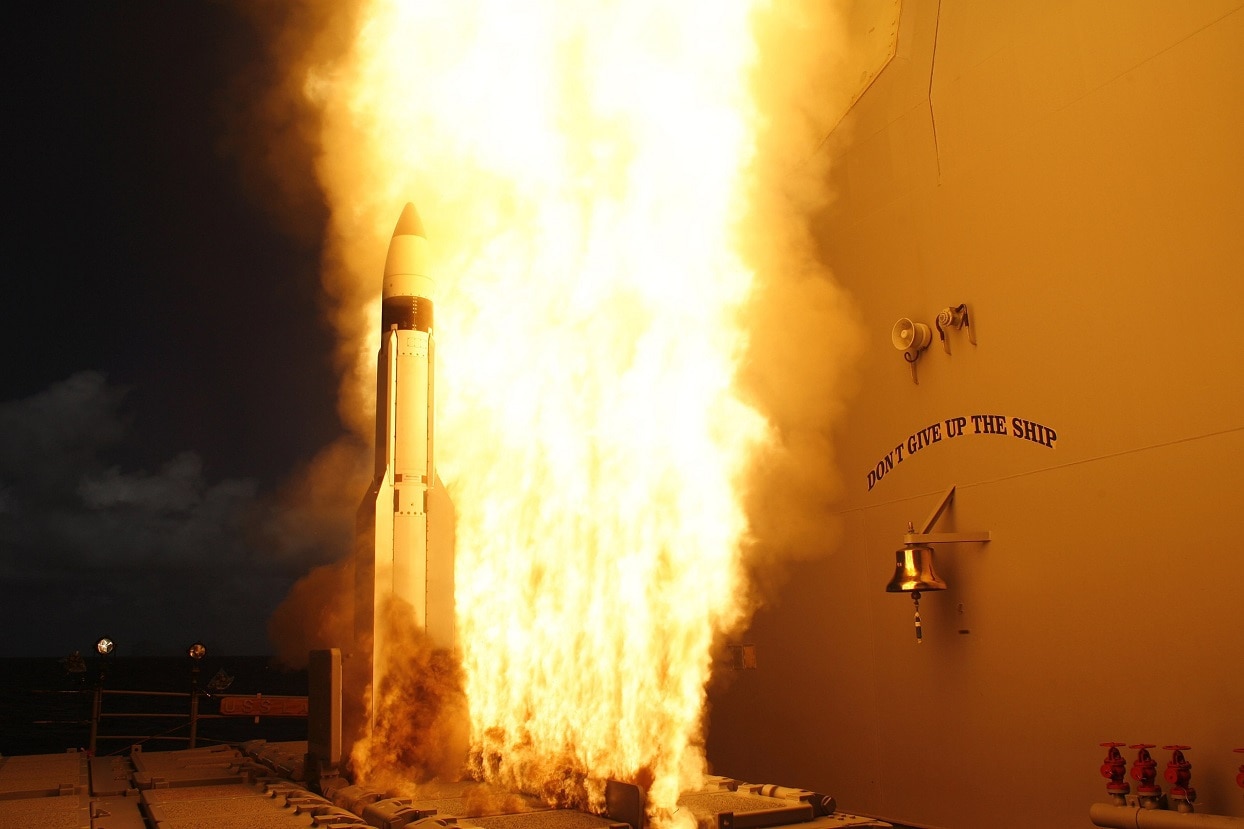The U.S. military is saying no to a Trump-era nuclear weapon that was designed to maintain deterrence against Russia. The Biden administration’s new National Defense Strategy included the cut to the nuclear-armed sea-launched cruise missile (SLCM-N). This was an unexpected decision for some defense officials, who were advocating for the system. The SLCM-N had been in development since 2018 to focus on Russia, but the Department of Defense decided to kill the program because it wasn’t needed since the Biden administration believes other nuclear systems are sufficient to maintain the U.S. nuclear triad.
Thanks But No Thanks
Secretary of Defense Lloyd Austin said the United States has ample capacity to deter Russia with existing sea-launched nuclear weapons. Austin addressed a question about Vladimir Putin’s latest talk about the possible use of nuclear devices in Ukraine by saying that Putin already “understands what our capability is.”
The Navy Wanted to Cut It Anyway
To be sure, the Navy left out the SLCM-N from its FY23 budget request, so the DOD’s decision is not a complete shock, but in such a high level threat environment in Ukraine, it would have also made sense to continue development of the SLMC-N. The Navy said the cruise missile would cost too much. The other problem was the timeline. Navy acquisition officials believed the system would not be ready until 2035.
Four Star General Milley Advocated for the Weapon
Chairman of the Joint Chief of Staff General Mark Milley had said in previous Congressional testimony that he supported SLCM-N, which leads one to believe that there are still proponents for giving the president numerous choices for nuclear arms.
Think Tank Expert Was In Favor of SLCM-N
Nuclear weapons analyst Patty-Jane Geller at the Heritage Foundation wrote that the SLCM-N was needed to shore up the Navy’s nuclear arsenal and that it filled a gap in the nuclear triad. Gellar believes “investing in the SLCM-N is worth overcoming any practical difficulties.”
Russia’s Nuclear-tipped Torpedo Is a Threat
Meanwhile, Russia has a submarine that can deploy a nuclear-armed drone torpedo from thousands of miles away. These are called Poseidons, and they are believed to be carried by the Project 09852 Belgorod submarine that may be currently patrolling the Arctic in a voyage that began this month, having some speculating that a nuclear test was imminent. The Belgorod has up to six Poseidons that are 80 feet long and have a 100 megaton nuclear warhead. The Poseidon could strike the coast of the eastern United States and release deadly radioactivity in crowded cities.
Perception Is Reality
Russia continually tries to maintain a nuclear advantage over the United States despite New START and has numerous nuclear weapons in reserve. Perception is reality in nuclear strategy. If Moscow believes that the United States is not continually building up its nuclear forces, it could determine that the Americans have lost the resolve to invest the time and money for new nuclear weapons.
Pentagon Believes China Is Number One Threat
China is also a “pacing challenge” as the National Defense Strategy notes and its navy also depends on submarines to deliver nuclear weapons in the Indo-Pacific. Thus, the SLCM-N would have been a good addition to the submarine fleet to deter China. Beijing also desires to build up its own nuclear forces in the region to match the United States in efficacy and capabilities.
It’s understandable the Biden administration chose to cancel the SLCM-N. The price tag looked expensive and the development phase was going to take over a decade. But nuclear deterrence does not come cheap, and it takes continuous effort and resources to stay ahead of adversaries. This denotes a growing nuclear threat, and the White House, Pentagon, and Congress should understand what the stakes are before it takes the axe to new nuclear weapons.
Expert Biography: Serving as 1945’s Defense and National Security Editor, Dr. Brent M. Eastwood is the author of Humans, Machines, and Data: Future Trends in Warfare. He is an Emerging Threats expert and former U.S. Army Infantry officer. You can follow him on Twitter @BMEastwood. He holds a Ph.D. in Political Science and Foreign Policy/ International Relations.

